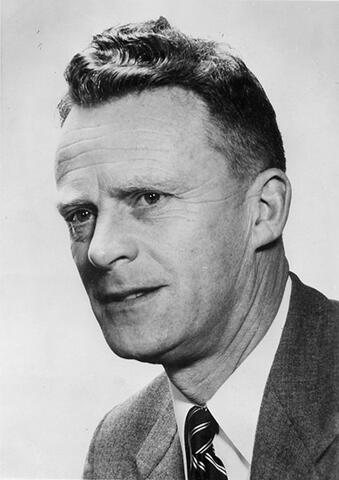
Title and statement of responsibility area
Title proper
Arthur J. Porter - Portrait
General material designation
- Graphic material
Parallel title
Other title information
Title statements of responsibility
Title notes
Level of description
Item
Reference code
Edition area
Edition statement
Edition statement of responsibility
Class of material specific details area
Statement of scale (cartographic)
Statement of projection (cartographic)
Statement of coordinates (cartographic)
Statement of scale (architectural)
Issuing jurisdiction and denomination (philatelic)
Dates of creation area
Date(s)
-
[1960] (Creation)
Physical description area
Physical description
1 photograph : b&w-drymounted ; 11 x 8 cm
1 negative : b&w ; 12.5 x 10 cm
Publisher's series area
Title proper of publisher's series
Parallel titles of publisher's series
Other title information of publisher's series
Statement of responsibility relating to publisher's series
Numbering within publisher's series
Note on publisher's series
Archival description area
Name of creator
Custodial history
Scope and content
Head and shoulders portrait of Arthur J. Porter, dean of Engineering.
Bio/Historical Note: Arthur J. Porter was born in 1910 in Ulverston, England. While studying at the University of Manchester, Porter helped build a differential analyzer - one of the world’s first analog computers, using a Mecanno construction set. In 1937 he accepted a fellowship at the Massachusetts Institute of Technology (MIT). Porter helped build the Rockefeller differential analyser - the most ambitious analog/digital computer built to date. It was used extensively for projects during World War II. In 1949 Porter accepted a position with Ferranti Canada and worked on the DATAR system. DATAR combined data from a convoy of ships’ sensors, providing a single ‘overall view’ that allowed the commander to make better-informed decisions. Soon afterwards, in the early 1950s, Porter was one of six Canadians selected to work on Project Lamp Light; working on data processing expertise was crucial to this top-secret North American air defence initiative. In 1958 Porter became the fourth dean of Engineering at the University of Saskatchewan. There, along with Norman Moody and Dr. William Feindel, Porter established Canada’s first biomedical research program. In 1962 Porter moved to the University of Toronto to chair their new Industrial engineering department - one of the first in the world. While there, Porter also helped establish the University’s biomedical program. During the late 1960s he was involved in projects that bridged the gap between culture and science. He was the first acting director of the University of Toronto’s Centre for Culture and Technology. Porter also chaired the Science and Technology Advisory Committee when Montreal hosted the World’s Fair-Expo 67. Porter died in 2010 in Winston-Salem, North Carolina at age 99.
Notes area
Physical condition
Immediate source of acquisition
Arrangement
Language of material
Script of material
Location of originals
Availability of other formats
Restrictions on access
There are no restrictions on access.
Terms governing use, reproduction, and publication
Photographer: Gibson
Copyright holder: University of Saskatchewan
Other terms: Responsibility regarding questions of copyright that may arise in the use of any images is assumed by the researcher.
Finding aids
Associated materials
Accruals
Location note
Vol. 82 / Neg. Vol. 13
Alternative identifier(s)
Standard number area
Standard number
Access points
Subject access points
Place access points
Name access points
- Gibson Photo (Author)

